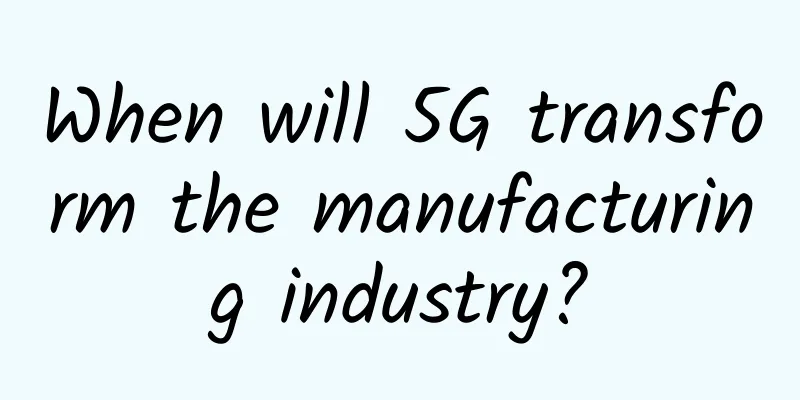When will 5G transform the manufacturing industry?

|
5G not only offers faster connections and more bandwidth than Wi-Fi and 4G LTE, but it also offers better connectivity, lower latency, and support for thousands of devices in one location, all of which are attractive manufacturing facilities, but it will be some time before that happens. According to Gartner, smart factories are a major opportunity for 5G. Some use cases can be achieved with existing 4G LTE, but most require the low latency and high reliability that 5G offers.
“Industrial companies have shown an immediate interest in 5G,” said Sachin Lulla, EY’s global digital strategy and transformation leader. “This new wave of hyperconnectivity will redefine the enterprise.” He said the manufacturing sector will lead the way in creating value from 5G investments, followed by energy and utilities, healthcare, the public sector and transportation. Today, the lack of reliable, low-latency and high-bandwidth connectivity has hurt the adoption of the best technologies that require such support. “That’s about to change with 5G, bringing interconnectivity between machines, materials and people, unlocking millions of dollars in value.” That value will come from increased productivity, reduced inventory, improved uptime, worker safety and an agile supply chain, he said. According to the latest survey conducted by Ernst & Young in the UK, 10% of companies have allocated funds for 5G, and 50% of enterprises plan to upgrade to 5G within the next two years. Manufacturers are more aggressive, with almost two-thirds of companies planning to implement 5G within two years. “Many industrial companies have already started adopting and testing 5G,” he added. 5G and other car manufacturers Audi, for example, has already begun testing 5G robotic motion control, he said. Nokia's 5G Oulu factory is using 5G for in-factory connectivity, a combination of edge and cloud computing, and IoT analytics. According to Lulla, this has already saved 30% to 50% of product delivery time. BMW AG is working to achieve full 5G wireless coverage at all its factories, and it’s not just the Chinese automotive sector that is embracing the technology. “China seems to be winning the race with heavy investments and early adoption of 5G in its industry,” Lulla said. In addition to benefiting from increased internal efficiency, manufacturers can also benefit from growth in the 5G sector in other ways. According to a research report released this month by IHS Markit, 5G will generate $13.2 trillion in new business by 2035. The biggest impact will be on manufacturing, which will generate nearly $4.7 trillion in new economic activity, including the value of 5G-enabled devices that manufacturers can sell to other companies. 5G costs and challenges The industrial rollout of 5G will not be easy, especially at first. According to a recent EY survey, the biggest concern companies have is security, as 5G-connected devices will greatly expand the potential network attack surface. According to the report, 40% of respondents said cybersecurity was one of their top three concerns, followed by the immaturity of technology (34%) and lack of business relevance (32%). There is also the issue of cost. “For on-premises deployments, enterprise back-end systems need to be substantially upgraded,” said Holger Mueller, an analyst at Constellation Research. “Many manufacturing plants don’t even have Wi-Fi.” Overall, 5G will improve over time, just as 4G improved. "When we first launched 4G, we didn't have the capacity that we have today," he said. Fortunately, 5G devices will be software upgradeable, so today's Release 15 devices won't be obsolete. "More and more advanced features will be released in Release 16 as existing hardware will work." Dan Bieler, an analyst at Forrester Research, said that as standards evolve and the technology rolls out, the 5G option will become increasingly attractive. Today, only initial 5G capabilities are available, with few devices on the market and public 5G cellular networks just beginning to emerge. “There are two major features of 5G that are not available yet,” Bieler said. “The first is extremely low latency, and the other is the ability to connect tens of thousands of devices in a small geographic area – up to a million sensors in a square kilometer. Both of these factors are very tempting for manufacturers.” Still, he’s seen a lot of interest from manufacturers. Earlier this year, Bieler attended the world’s largest manufacturing trade show in Hanover, Germany, and 5G was a key topic of discussion. “All the big manufacturers in Germany are working on this. They are building their own private 5G network infrastructure and connecting all the machines in their factories. There is a real shift in how these companies think about the manufacturing process. I think a lot of other countries will follow this example,” he said. Kim Knickle, who focuses on manufacturing at Insight, predicts there is still a long way to go before manufacturers budget heavily for 5G. “If it’s generally available in 2022, we’re talking about 2024 for general availability in manufacturing plants,” she said. |
<<: How will the epidemic affect the development of 5G in China? Will China's 5G fall behind again?
>>: Is 5G network harmful to the body? Scientific facts answer your questions
Recommend
Everyone wants to know about BGP, routing strategy is handled like this
About the author: Xiao Honghui, graduated from th...
Does Snowflake's popularity mean Hadoop is dead? What exactly is a big data system?
Any technology will go through a process from hig...
Hosteons: Free upgrade to 10Gbps ports in Los Angeles/New York/Dallas, KVM annual payment starts at $21
In January this year, Hosteons began to provide 1...
Application of 5G in epidemic prevention and control in medical system
At the beginning of 2020, the COVID-19 epidemic w...
Forecast of the layout of the three major operators in 2018
2017 is coming to an end. In this year, the total...
Massive Data officially releases AtlasDB, an enterprise-level private cloud database
[51CTO.com original article] On July 28, Beijing ...
Will 5G phones turn back to 4G? Possibly
At the press conference of the State Council Info...
5G enters a critical development period: Accelerating base station coverage costs and continuous breakthroughs in applications
In 2020, my country's large-scale 5G construc...
TmhHost Hong Kong three network CN2 GIA monthly payment starts from 45 yuan, US CN2 GIA high defense VPS quarterly payment starts from 99 yuan
TmhHost is a regular domestic company with ISP\IC...
There is a new way to attack wireless routers, and the password is dangerous
A new way to attack wireless routers has been dis...
[11.11] HostYun offers 25% off, starting from 13 yuan/month, data centers in Hong Kong/US/Japan/Korea, etc.
HostYun launched this year's Double 11 promot...
Deep understanding of DNS tunnel communication in practical scenarios
Preface Recently, we conducted an in-depth analys...
Minsheng Technology advocates the concept of the BioFaaS era and releases four series of products
[[248983]] 【Born extraordinary, intelligent and f...
Samsung supplies Japanese operator KDDI with equipment to expand its 5G network coverage
On March 31, Samsung Electronics announced that i...
2G will be completely withdrawn from the network next year, and there are still 273 million people who have not migrated. The general trend is inevitable.
2G will be completely withdrawn from the network ...









